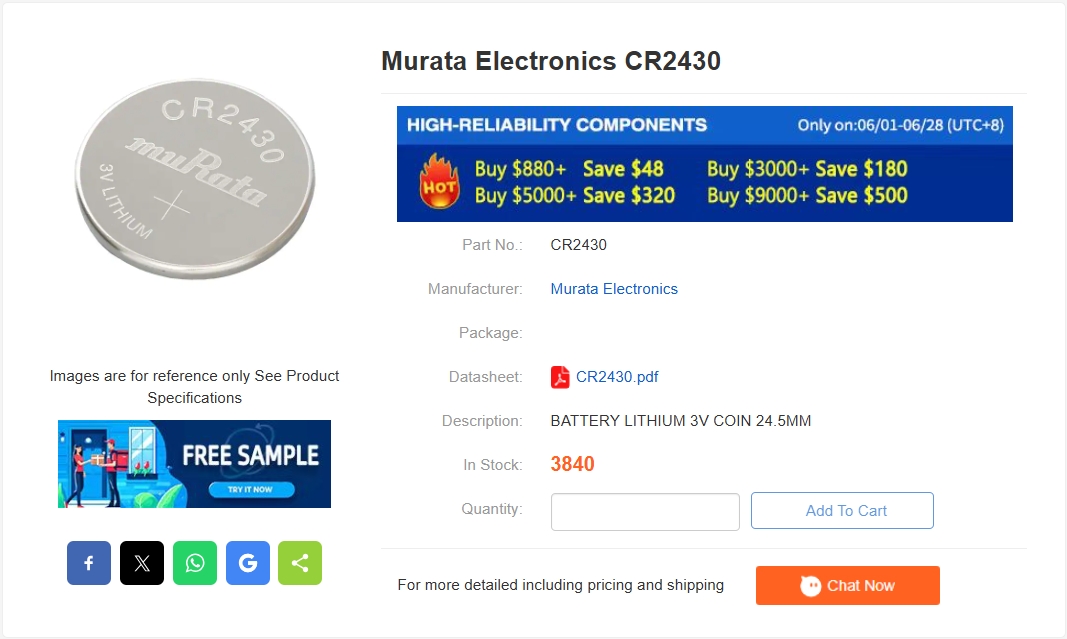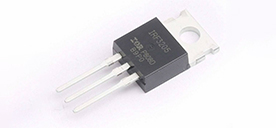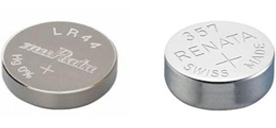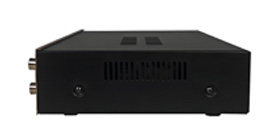CR2430 Battery Equivalent: Selection and Replacement Guide
2024/12/6 16:43:19
Views:
When the CR2430 battery runs out, finding a suitable replacement is key to ensuring the proper operation of the device. This article will help you understand CR2430 battery equivalents, introduce common alternatives, and provide a practical guide to choosing and replacing a battery.
Volvo Key Fob CR2430 Battery Replacement
- CR2430 Battery Overview
- What Battery is Equivalent to CR2430?
- How to Choose the Right CR2430 Equivalent
- Where to Buy CR2430 and Its Alternatives
- How do I replace a CR2430 battery?
- Precautions with CR2430 Replacements
CR2430 Battery Overview
CR2430 3V coin-type lithium button battery, 0.96 Dia x 0.12H (24.5mm x 3.0mm), commonly used in watches, calculators, keychains, medical devices and other Small electronic device.
What Battery is Equivalent to CR2430?
If you need to replace your CR2430 battery, there are many compatible replacement batteries on the market. Here are a few common equivalents that are similar to CR2430 batteries in voltage, size, and performance:
DL2430: Battery produced by Duracell, fully compatible with CR2430, suitable for small electronic devices such as watches and keychains.
ECR2430: Produced by Energizer, stable performance, widely used in watches, calculators and other devices.
KCR2430: Compatible with CR2430, suitable for low-power devices such as toys and small lighting tools.
KECR2430: Same voltage and size as CR2430, suitable for key chains, medical equipment and other small electronic products.
BR2430: Manufactured by Panasonic, with the same voltage and size as CR2430, it is especially suitable for devices with long-term storage, such as hearing AIDS and medical devices.
KL2430: Lithium button battery, suitable for watches, toys and other devices, the same as CR2430.
LM2430: Same voltage and size as CR2430, suitable for specific equipment, although less common.
ML2430: Rechargeable lithium button batteries, suitable for devices that support recharging, such as some watches and medical devices, are a sustainable alternative.
CR2430 Battery Cross Reference
Below is the CR2430 Battery Equivalence comparison table to help you find the right replacement option.
How to Choose the Right CR2430 Equivalent
When choosing an alternative to the CR2430 battery, consider the following:
Voltage and size: Verify that the battery size (24mm x 3mm) and voltage (3V) meet the device requirements. Refer to the manual or the battery compartment label.
Battery type: Most alternatives (e.g. DL2430, ECR2430) are lithium batteries, but different brands and types of batteries vary in performance. Select the right type of battery according to the specific requirements of the device.
Brand reliability: Choose a reputable brand (such as Duracell, Energizer, Panasonic, etc.) to ensure the stability and long service life of the battery.
Price vs. quality balance: Cheaper batteries, while seemingly more attractive, have a shorter life and may need to be replaced more frequently, increasing long-term costs. Choose high-quality batteries, although the price is slightly higher, but in the long run more cost-effective.
Usage requirements: For long-term storage devices, choose batteries such as BR2430, which have a long service life and are suitable for devices that are not used for a long time. If the device supports charging, the ML2430 is a greener and more efficient option.
Where to Buy CR2430 and Its Alternatives
You can find CR2430 and its equivalents in the following places:
Online retailers: Platforms such as Amazon, eBay, etc., offer CR2430 and its alternatives (e.g. DL2430, ECR2430).
Online wholesalers such as icwhale.com offer bulk purchasing options for CR2430 batteries and alternatives.
Electronics stores: Many local stores sell watches, batteries, and office supplies and also carry the CR2430 and its equivalent. You can type "CR2430 battery near me" into the search box to find nearby retailers for easy and quick purchases.
Pharmacies: Some pharmacies have CR2430 batteries for medical devices such as hearing AIDS.
How do I replace a CR2430 battery?
Replacing the CR2430 battery is as simple as following these steps:
Find the battery compartment: Check the device, the battery is usually secured by a small panel or housing.
Remove the back cover: Gently remove the back cover using a small screwdriver or fingernail. Some devices, such as watches, may require specialized tools.
Take out the old battery: Carefully take out the old CR2430 battery, if the battery is stuck, you can use a small tool to gently pry out.
Install a new battery: Place the new CR2430 (or equivalent) in the battery compartment. The positive terminal (+) must face up, and ensure that the battery is securely placed.
Close the cover: Close the battery compartment and gently press the back cover of the device to ensure it is firmly closed.
Test the device: After installing the battery, turn on the device to check whether it is working properly.
Precautions with CR2430 Replacements
Although it is simple to replace the CR2430 battery, the following issues need to be noted when operating:
Compatibility issues: Not all replacement batteries will work on every device. While most battery voltages are consistent, the capacity or internal chemical composition of the battery may differ, affecting device performance. Before replacement, check the battery specifications of the device to ensure that the replacement battery is compatible with the primary battery.
Battery life differences: Battery life can vary from brand to brand, and low quality batteries can lead to frequent replacement. In order to ensure the long-term stable operation of the equipment, it is recommended to choose a brand with a good reputation.
Battery leakage problems: Poor quality or improperly stored batteries can leak and damage the device. To avoid this problem, buy batteries from a regular source and make sure they are stored in a dry, cool place.
Replacing the CR2430 battery is not complicated, and choosing the right replacement battery can ensure the long-term stable operation of the device. With this guide, you can easily find a CR2430-compatible alternative and complete a smooth battery replacement. Remember to pay attention to factors such as voltage, size, brand and usage requirements when choosing a replacement battery to ensure lasting and stable device performance.
Related Information
-
-
Phone
+86 135 3401 3447 -
Whatsapp






